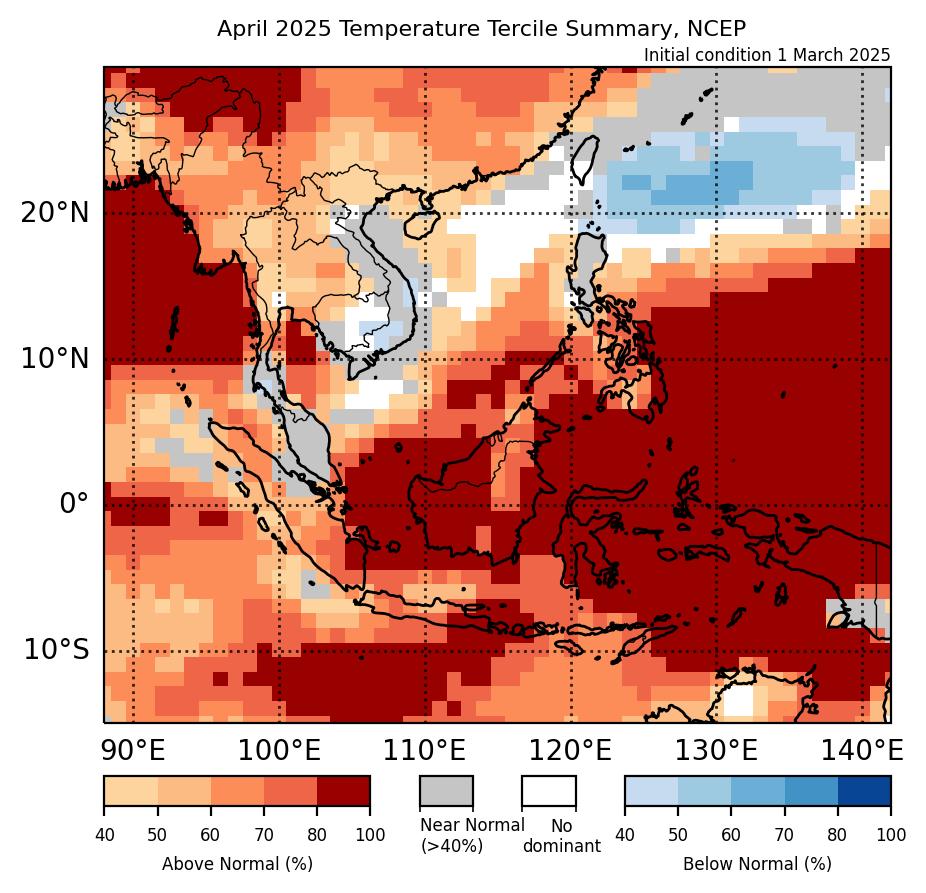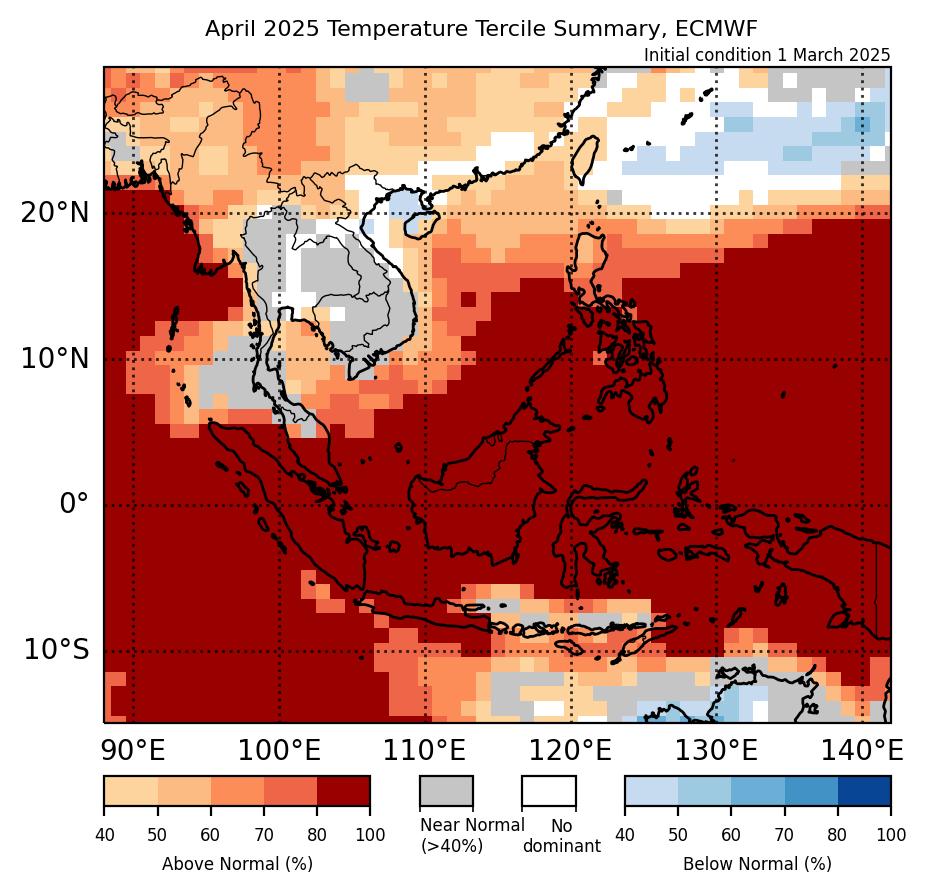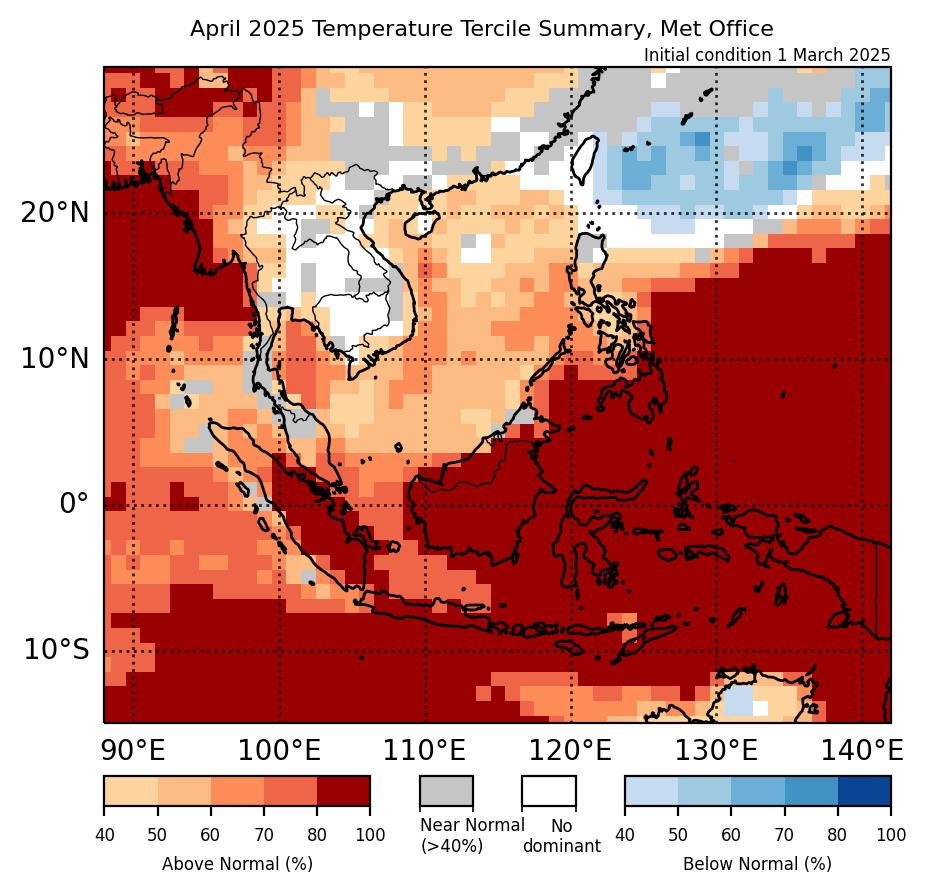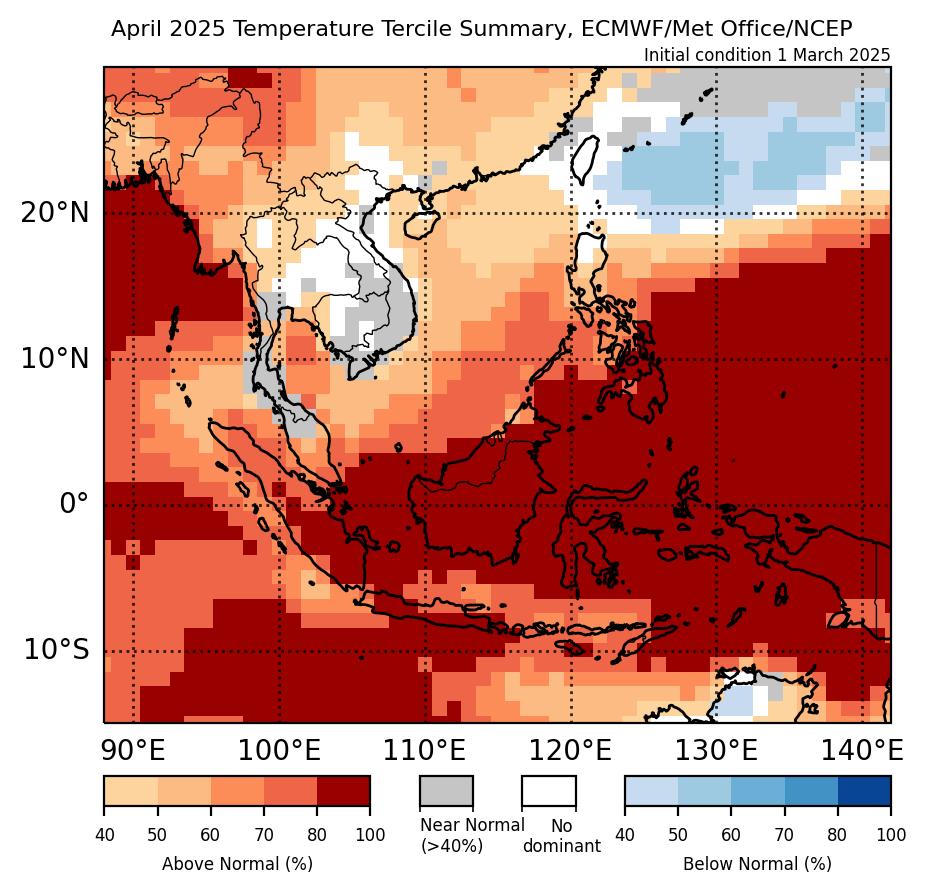Temperature
Monthly Temperature Outlook: April 2025
Issued: 19 Mar 2025
For April 2025, above-normal temperature is predicted over much of the ASEAN region.
For April 2025, above-normal temperature is predicted over much of the ASEAN region based on the multi-model ensemble (Figure 4), except over central and eastern parts of Mainland Southeast Asia with near-normal temperature predicted. The above-normal temperature over the southern ASEAN region is predicted with highest confidence by the ECMWF model (Figure 2) followed by the UK Met Office model (Figure 3) and the NCEP model (Figure 1). Models’ skill for predicting above-normal temperature is good over the Maritime Continent as well as over much of Mainland Southeast Asia, except over northern Mainland Southeast Asia with generally moderate skill. Models’ skill for predicting near-normal temperature is low to moderate for the mentioned regions.

Figure 1: Temperature tercile summary predictions of NCEP model for April 2025 (contains modified Copernicus C3S information).

Figure 2: Temperature tercile summary predictions of ECMWF model for April 2025 (contains modified Copernicus C3S information).

Figure 3: Temperature tercile summary predictions of UK Met Office model for April 2025 (contains modified Copernicus C3S information).

Figure 4: Temperature tercile summary predictions of the multi-model ensemble for April 2025 (contains modified Copernicus C3S information).